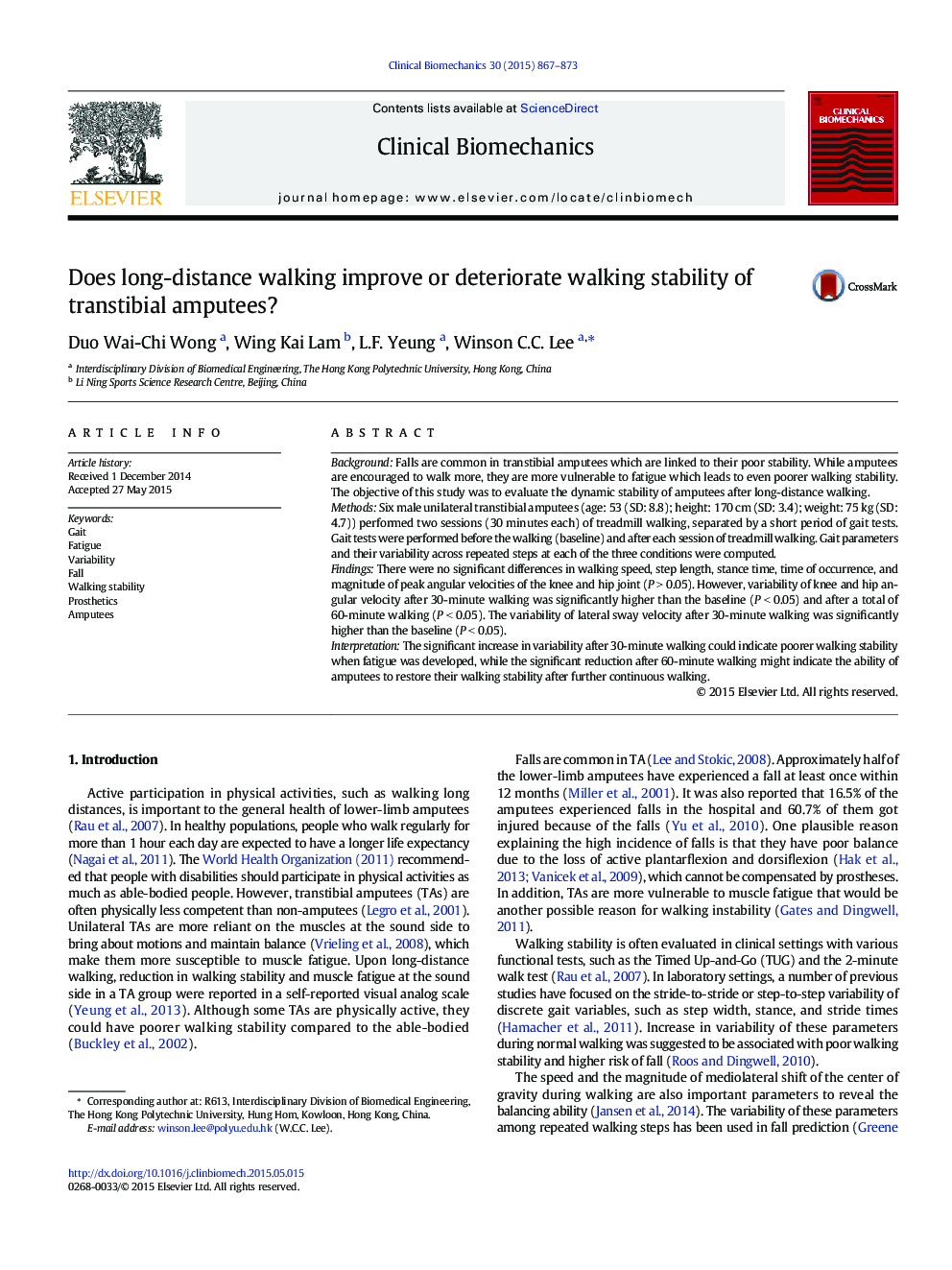| Article ID | Journal | Published Year | Pages | File Type |
|---|---|---|---|---|
| 6204700 | Clinical Biomechanics | 2015 | 7 Pages |
â¢Stability parameters of transtibial amputees were studied after 60 minutes walking.â¢Significant differences were found in variability of lateral sway velocity and;â¢Knee and hip angular velocity upon repeated steps at different time instancesâ¢Variability increased after 30 minutes of walking, but decreased after 60 minutes.â¢Long-distance walking induced instability, but was restored after further walking.
BackgroundFalls are common in transtibial amputees which are linked to their poor stability. While amputees are encouraged to walk more, they are more vulnerable to fatigue which leads to even poorer walking stability. The objective of this study was to evaluate the dynamic stability of amputees after long-distance walking.MethodsSix male unilateral transtibial amputees (age: 53 (SD: 8.8); height: 170Â cm (SD: 3.4); weight: 75Â kg (SD: 4.7)) performed two sessions (30Â minutes each) of treadmill walking, separated by a short period of gait tests. Gait tests were performed before the walking (baseline) and after each session of treadmill walking. Gait parameters and their variability across repeated steps at each of the three conditions were computed.FindingsThere were no significant differences in walking speed, step length, stance time, time of occurrence, and magnitude of peak angular velocities of the knee and hip joint (PÂ >Â 0.05). However, variability of knee and hip angular velocity after 30-minute walking was significantly higher than the baseline (PÂ <Â 0.05) and after a total of 60-minute walking (PÂ <Â 0.05). The variability of lateral sway velocity after 30-minute walking was significantly higher than the baseline (PÂ <Â 0.05).InterpretationThe significant increase in variability after 30-minute walking could indicate poorer walking stability when fatigue was developed, while the significant reduction after 60-minute walking might indicate the ability of amputees to restore their walking stability after further continuous walking.
